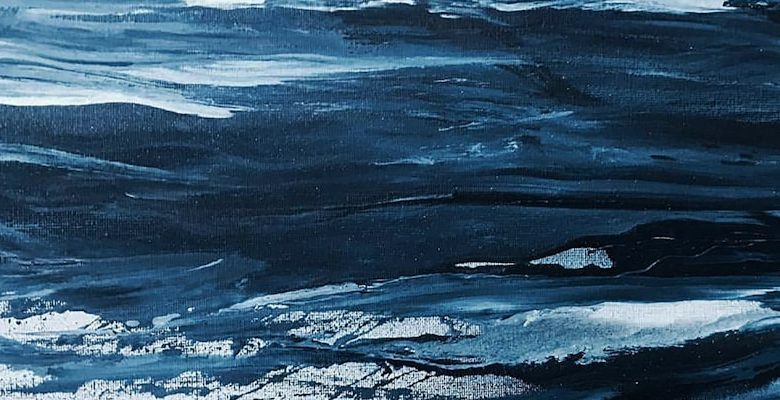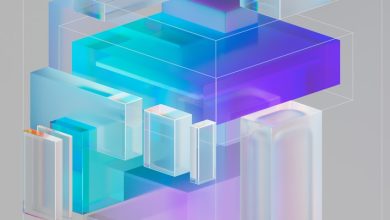Blockchain in the Art World: NFTs and Beyond

- Understanding the Basics of Blockchain Technology
- Exploring the Impact of NFTs on the Art Market
- Challenges and Opportunities for Artists in the Digital Age
- The Future of Art Ownership with Blockchain
- Case Studies: Successful Integration of Blockchain in the Art World
- Ethical Considerations in the Use of NFTs for Artistic Creations
Understanding the Basics of Blockchain Technology
Blockchain technology is a decentralized, distributed ledger system that securely records transactions across a network of computers. Each block in the chain contains a list of transactions, and once a block is added to the chain, it cannot be altered without altering all subsequent blocks. This makes blockchain technology highly secure and tamper-proof, making it ideal for a wide range of applications beyond just cryptocurrencies.
One of the key features of blockchain technology is its transparency. Because each transaction is recorded on a public ledger that is accessible to all participants on the network, there is a high level of transparency and accountability. This can be particularly beneficial in industries where trust is crucial, such as the art world.
Blockchain technology can revolutionize the art world by providing a secure and transparent way to track the provenance of art pieces. This can help to prevent fraud and ensure that artists receive fair compensation for their work. Additionally, blockchain technology can enable the creation of non-fungible tokens (NFTs), which are unique digital assets that can represent ownership of a piece of art.
Overall, understanding the basics of blockchain technology is essential for anyone looking to explore its potential applications in the art world. By leveraging the security, transparency, and immutability of blockchain technology, artists, collectors, and galleries can revolutionize the way art is bought, sold, and shared.
Exploring the Impact of NFTs on the Art Market
Exploring the impact of NFTs on the art market reveals a significant shift in how art is bought, sold, and valued. Non-fungible tokens have revolutionized the way artists can tokenize their work, creating a digital certificate of ownership that is unique and cannot be replicated. This has opened up a new world of possibilities for artists to reach a global audience and receive fair compensation for their creations.
One of the key benefits of NFTs is the ability to prove ownership and authenticity, which has historically been a challenge in the art world. Blockchain technology provides a secure and transparent way to track the provenance of artwork, reducing the risk of fraud and ensuring that artists receive proper credit for their work. This increased transparency has the potential to attract more investors and collectors to the art market, driving up demand and prices for NFT art.
Additionally, NFTs have created new opportunities for artists to monetize their work through smart contracts that automatically pay royalties every time their art is resold. This has the potential to provide artists with a more sustainable source of income and empower them to continue creating without relying solely on one-time sales. As a result, we are seeing a shift in how artists perceive their value and how they engage with the art market.
Challenges and Opportunities for Artists in the Digital Age
In the digital age, artists face both challenges and opportunities when it comes to leveraging blockchain technology in the art world. This innovative technology offers a new way for artists to authenticate and sell their work, but it also presents new hurdles to navigate. Here are some key points to consider:
1. **Increased Exposure**: With the rise of NFTs, artists now have the opportunity to showcase their work to a global audience like never before. This increased exposure can lead to new fans, collectors, and opportunities for collaborations.
2. **Copyright Protection**: Blockchain technology can help artists protect their intellectual property rights by creating a secure and transparent record of ownership. This can help prevent unauthorized use of their work and ensure they are properly compensated for their creations.
3. **Marketplace Competition**: As more artists enter the digital art space, competition on blockchain marketplaces can be fierce. Artists must find ways to stand out from the crowd and attract collectors to their work.
4. **Technical Challenges**: While blockchain technology offers many benefits, it also comes with a learning curve. Artists may need to invest time and resources into understanding how to mint, sell, and promote their work using NFTs.
5. **Financial Implications**: Selling art on the blockchain can be lucrative, but it also comes with fees and expenses that artists must consider. They must weigh the potential financial rewards against the costs of participating in the digital art market.
Overall, blockchain technology presents a unique opportunity for artists to revolutionize the way they create and sell art. By embracing this new technology and navigating the challenges it presents, artists can position themselves for success in the digital age.
The Future of Art Ownership with Blockchain
One of the most exciting developments in the art world is the use of blockchain technology to revolutionize art ownership. By utilizing blockchain, artists and collectors can create unique digital assets known as NFTs, or non-fungible tokens, that represent ownership of a specific piece of art. This technology allows for greater transparency and security in art transactions, as each NFT is stored on a public ledger that cannot be altered or tampered with.
Blockchain also enables artists to receive royalties every time their art is resold, ensuring that they continue to benefit from the appreciation of their work over time. This has the potential to disrupt the traditional art market, where artists often struggle to receive fair compensation for their creations. Additionally, blockchain allows for the fractional ownership of art, meaning that multiple investors can own a stake in a single piece, democratizing access to the art market.
Overall, the future of art ownership with blockchain is bright. As more artists and collectors embrace this technology, we can expect to see a more equitable and transparent art market that benefits creators, collectors, and investors alike. By leveraging blockchain, the art world is entering a new era of innovation and opportunity that has the potential to reshape the industry for the better.
Case Studies: Successful Integration of Blockchain in the Art World
Blockchain technology has been making waves in the art world, revolutionizing the way art is bought, sold, and authenticated. Several successful case studies demonstrate the seamless integration of blockchain in the art market.
One such example is the partnership between Maecenas and Elysium, which utilized blockchain to fractionalize a multi-million-dollar artwork by Andy Warhol. This allowed art enthusiasts to purchase shares of the artwork, giving them a stake in the piece and democratizing access to high-value art.
Another notable case study is the collaboration between Verisart and ArtSystems, where blockchain technology was used to create digital certificates of authenticity for artworks. This ensured the provenance and ownership of the pieces, providing a secure and transparent way for buyers to verify the authenticity of their purchases.
Furthermore, the intersection of blockchain and non-fungible tokens (NFTs) has opened up new possibilities for artists to monetize their work and reach a wider audience. Platforms like SuperRare and Rarible have enabled artists to create and sell digital art as NFTs, which are then authenticated and recorded on the blockchain, ensuring the uniqueness and ownership of each piece.
Overall, these case studies demonstrate the successful integration of blockchain technology in the art world, providing transparency, security, and accessibility for artists, collectors, and enthusiasts alike. As the art market continues to evolve, blockchain is poised to play an increasingly vital role in shaping the future of the industry.
Ethical Considerations in the Use of NFTs for Artistic Creations
When considering the use of NFTs for artistic creations, it is crucial to take into account the ethical implications that come with this new technology. One of the main concerns revolves around the environmental impact of minting and trading NFTs, as the process requires a significant amount of energy. Artists and collectors alike should be mindful of the carbon footprint associated with their NFT activities.
Another ethical consideration is the issue of ownership and authenticity. With NFTs, artists can tokenize their work and sell it as a unique digital asset. However, there have been cases of plagiarism and unauthorized use of art in the NFT space. It is essential for creators to protect their intellectual property rights and for buyers to verify the authenticity of the NFT they are purchasing.
Furthermore, the use of NFTs raises questions about inclusivity and accessibility in the art world. While blockchain technology has the potential to democratize the art market by allowing artists to bypass traditional gatekeepers, there are concerns about the elitism and exclusivity that can come with the high prices of NFTs. Artists and platforms should strive to make NFTs more accessible to a diverse range of creators and collectors.



